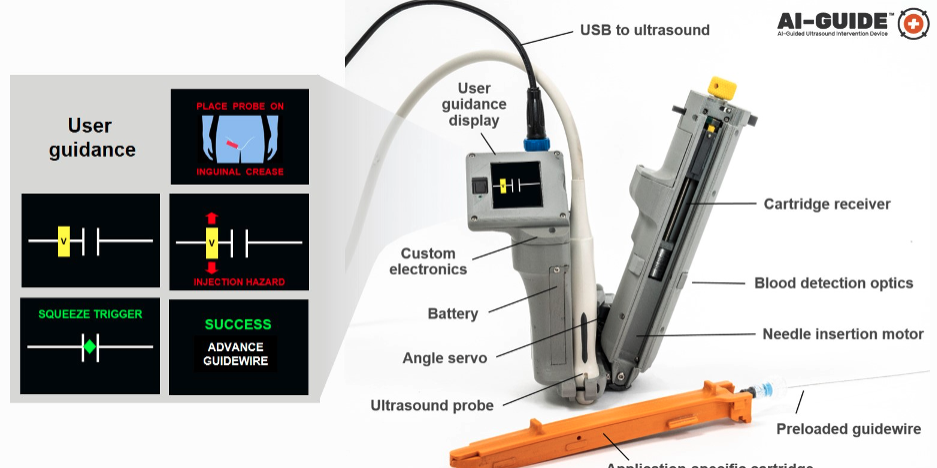After a traumatic accident, there is a small window of time where medical professionals can apply life-saving treatment to victims with severe internal bleeding. Delivering this type of care is complex, and key interventions require inserting a needle and catheter into a central blood vessel through which fluids, medications, or other aids can be given. First responders, such as ambulance EMTs, are not trained to perform this procedure, so treatment can only be given after the victim is transported to a hospital. In some instances, by the time the victim arrives to receive care, it may already be too late.
A team of researchers at Lincoln Laboratory, led by Laura Brattain and Brian Telfer from the Human Health and Performance Systems Group, together with physicians from the Center for Ultrasound Research and Translation (CURT) at Massachusetts General Hospital, led by Dr. Anthony Samir, have developed a solution to this problem. The Artificial Intelligence–Guided Ultrasound Intervention Device (AI-GUIDE) is a handheld platform technology that has the potential to help personnel with simple training to quickly install a catheter into a common femoral vessel, enabling rapid treatment at the point of injury.


